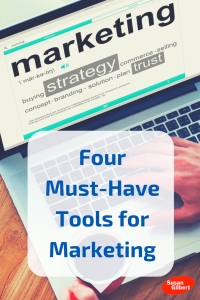
So you led the horse to water, but how do you make them drink? As a B2B start-up owner myself, I know you’ve got a lot on your plate besides running your company website. All too often, the process for getting a website off the ground in the first place can end up being so time consuming and expensive that by the time your site is finished, thinking about making any additional changes is the last thing you want to deal with.
Google desktop click-through rate: the top 4 positions receive 83% of page one organic clicks, according to Catalyst.
Chances are good that when your site first launches it will not be in the top four or even the top 10 organic search results. That’s completely okay; you’ve got time to build a robust thought leadership campaign and optimize your site’s content for higher organic rankings. But this won’t happen overnight. In the meantime, you need a clear, effective means for driving site traffic that won’t cost a fortune.
Start-up owners, sadly, are not Kevin Costner. Just because you’ve built a great website doesn’t mean anyone will actually come visit it. And if you fail to optimize your website for traffic and conversions, your sales pipeline will run dry pretty quickly. From keywords to thought leadership basics, here are four actionable tips that you can do right now to maximize your site’s impact.
1. Build it right the first time
Okay, I know what you’re thinking, “I just launched my site and now you’re telling me to rebuild it?” Not entirely. What I’m really telling you is to optimize site functionality (also known as user experience or “UX”). Consider this: virtually every potential client is going to search online for information about products and services before ever contacting a business. If your site is not well-designed, modern and engaging, potential clients won’t even make it to the “About Us” page before they bounce off your site for a competitor.
Content should be informative, short and sweet. Choose strong CTA’s “call to actions” and know where to place them on your web pages. Use colors and a theme that matches your industry and your products or services. If this doesn’t sound like your website, there are a number of free online site builders, like WordPress, IM Creator and Wix that can help streamline your site design without breaking the bank. If you have the budget to hire a professional web designer, I absolutely recommend doing so. It doesn’t matter how well optimized your content is; if no one can find the information they need because of poor site design, this defeats the purpose of your website!
2. Analyze your traffic
Who are your current site visitors? Where are they coming from? Understanding the sources of your web traffic is imperative to improving traffic flow. As soon as web traffic begins to trickle in, take a look at your latest Google Analytics reports. Are visitors finding your site through a keyword search or by directly typing in your web address? Understanding traffic patterns to and from your site is imperative to a strong marketing campaign. Let’s say you discover that two or three search terms are especially effective for driving traffic; go back and re-work your copy to naturally weave in these terms (don’t just randomly stuff them in there). Enhance your content to be rich with industry tips and information. You’ll naturally start attracting referral links from other sites and industry thought leaders.
Don’t be shy – reach out to others in your niche, and share your content in hopes they find it useful and helpful, compelling them to link out to it.
Doing so will help boost your organic search rankings (SERP’s) since you’ll be optimizing content for terms that already resonate with your target audience, as well as delivering to the search engines what they want. Conversely, if you discover that none of your search terms seem to be performing very highly, you’ll want to spend additional time on keyword research.
3. Drive traffic with social media
Social media marketing is a cost-effective promotion tool for reaching thousands of potential customers without spending a single dollar on pay-per-click ads. 84% of B2B marketers use social media in some form, according to Aberdeen. If you’re not on LinkedIn, at the very least, then you’re missing out on great (not to mention, free) opportunities to build awareness. Plus Linkedin is the most effective for business to business marketing. While there’s a lot you can do to optimize LinkedIn, these steps take only a few minutes and will significantly increase your lead generation potential.
Start by using your company page as a pipeline for LinkedIn leads for your actual website. Structure your page with a visual attractive header, a compelling pitch in your company description, and make your “recent updates” section clickable and conversion-focused. Finally, be sure that you are active on LinkedIn and post updates approximately once per week. You don’t want to spam your connections, but regular postings will keep you top-of-mind and boost your thought leadership credentials. Encourage your team members to become brand advocates on social media, which will further build your start-up’s reputation as an industry leader.
4. Be proactive with thought leadership
Don’t let your company blog becoming stagnant, or worse, sit empty altogether. A robust thought leadership program is absolutely essential for B2B marketing.
Content marketing generates three times as many leads as traditional outbound marketing, but costs 62% less, according to Demand Metric.
Kick-start your online marketing by re-purposing content from existing white papers, infographics or industry reports. Did a new industry study just come out? Post a short blog discussing the findings and then cross-post this blog on LinkedIn, Facebook and Twitter. It takes less than an hour to write a blog post, and you’ll be well on your way to establishing your business as an industry thought leader, all while generating more leads. No time in your schedule to write blog posts? Consider outsourcing to a professional writer or content marketing company that can deliver sophisticated, professional content that aligns with your target customers’ needs.
Bottom line
Ranking highly in organic search results won’t happen overnight. It takes time to ascend to the top of Google’s page rank hierarchy! But with smart use of keywords, cross-promotion on LinkedIn and strategic thought leadership campaigns, you’ll raise your online visibility with the would-be customers who are already searching for your services.
(205)







